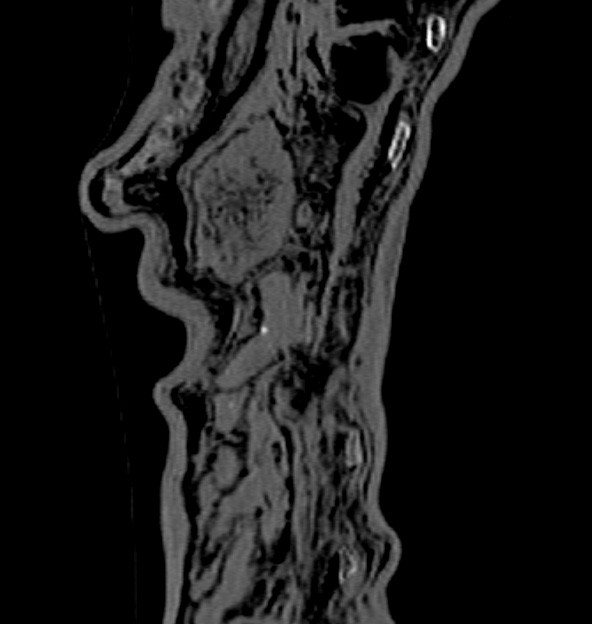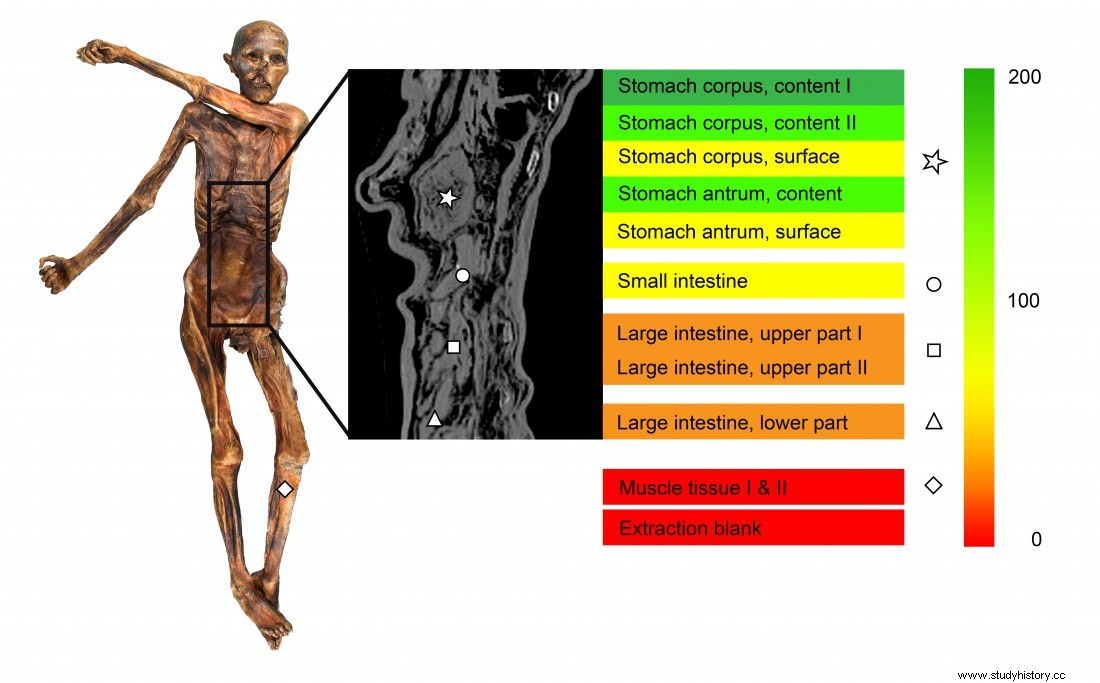 Samples taken from Ötzi's mummy.
Samples taken from Ötzi's mummy. HELICOBACTER . About Ötzi, we know almost everything:his DNA has been decoded, the contents of his intestines have made it possible to identify the menu of his last meal and the circumstances of his death seem to have been elucidated. On the health record, the experts determined that he was prone to heart disease, had parasites in his intestine and that he suffered from arthritis, Lyme disease and a periodontal infection:he therefore had pain in his teeth. New analyzes indicate that the Iceman, who lived around 5,300 years ago, also had a bacterium, Helicobacter pylori, in his stomach. , associated with gastric and duodenal ulcers, as revealed by a study published in the journal Science . X-ray of Ötzi's stomach and intestines:

A virulent strain
The bacterium Helicobacter is found in the mucous membranes of the stomach but these fragile structures have not been preserved in Ötzi. Also an international team of scientists developed a new method of analysis:"We were able to solve the problem by extracting all of the DNA from the contents of the stomach" says Frank Maixner of the European Academy (EURAC) in Bozen, Italy. "Once this step was completed, we managed to untangle the DNA sequences and reconstructed the 53,000-year-old genome of a Helicobacter Pylori" . The researchers also discovered marker proteins found in patients infected with the bacteria today, evidence that Ötzi's immune system reacted to the infection. Below is the concentration of Helicobacter in the mummy tissues:
 Credit:Südtiroler Archäologiemuseum/EURAC/Marco Samadelli-Gregor Staschitz-Central Hospital Bolzano.
Credit:Südtiroler Archäologiemuseum/EURAC/Marco Samadelli-Gregor Staschitz-Central Hospital Bolzano.
SICK? About 10% of people infected with Helicobacter suffer from clinical complications such as gastritis or peptic ulcers. But the diagnosis of these pathologies is based on the examination of the mucosa by endoscopy and biopsy. In the absence of this tissue "it cannot be said with certainty that the ice man had stomach problems. Nevertheless the preconditions for these pathologies exist in Ötzi" says Frank Maixner.
After reconstructing the genome of the bacterium, a college of geneticists studied its arrangement in more detail. "We had assumed that we would find in Ötzi a strain similar to that found in Europeans today. It turned out that it is a strain mainly observed in Central and South Asia currently that was found " Thomas Rattei is surprised. It also appears that a particularly virulent strain had colonized the stomach of this Copper Age man.
GENOMICS . Scientists speculate there were originally two strains of Helicobacter :an African and an Asian who recombined to form the modern European version. "The recombination of these two types of bacteria probably took place, contrary to theories, after the era of Ötzi" says Frank Maixner. This information can be useful to reconstruct the history of migrations in Europe which seems "much more complex than we thought" he concludes.
